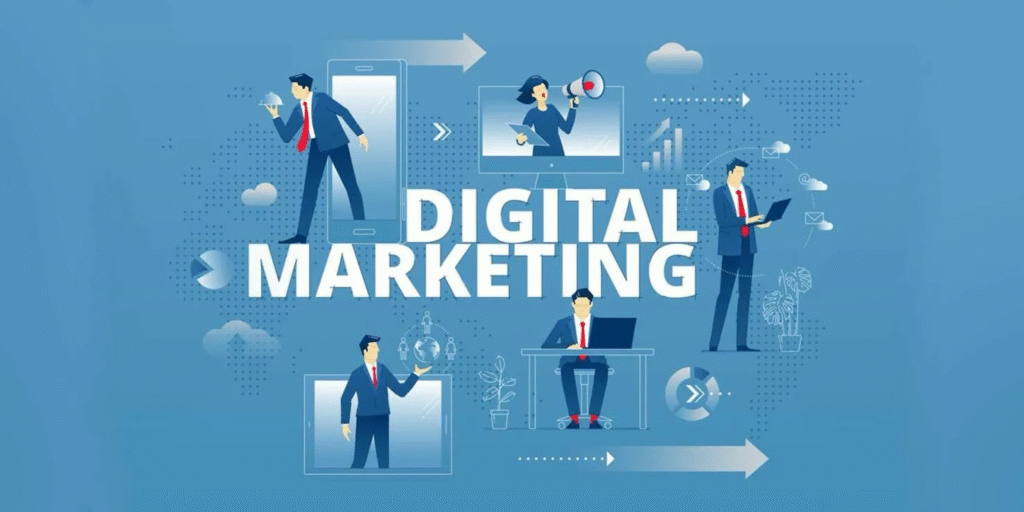Advertising has come a long way from hand-painted posters and print newspaper placements. Today, brands are creating high-impact visuals in minutes using intuitive design platforms. Tools like a free advertisement maker have made it easier than ever for businesses—big or small—to produce professional-quality ads without needing design expertise. But this shift didn’t happen overnight. It’s the result of decades of transformation driven by technology, changing consumer behavior, and the rise of digital media.
As companies move more aggressively into online spaces, the standards for ad design have changed dramatically. Modern audiences expect dynamic, visually appealing content that communicates value instantly. Static, text-heavy ads no longer cut it. Designers and marketers are now using advanced software, AI tools, and customizable templates to deliver compelling visuals at scale.
This evolution highlights a larger truth: advertising has always adapted to where consumers spend their attention. From print magazines to TV screens to mobile apps, the journey of ad design mirrors the journey of media consumption. Understanding this progression helps businesses create ads that resonate in an increasingly digital, visually driven world.
From Print Roots: The Birth of Modern Advertising
Long before digital screens existed, advertising thrived in print. Newspapers, magazines, and posters were the dominant formats, and design was heavily influenced by typography, hand-drawn illustrations, and bold headline styles. The goal was simple: grab attention and inform.
What Made Traditional Ads Effective?
- Strong visual hierarchy
- Clearly defined fonts and colors
- Limited layouts due to printing constraints
- Heavy reliance on copywriting
Print ads required careful planning because revisions were costly. Designers often spent days or weeks perfecting layouts. This slow, deliberate process helped define core advertising principles we still use today—contrast, symmetry, whitespace, and balance.
The TV Era: Motion Changes Everything
The 1950s introduced television as a dominant advertising channel. Suddenly, advertisers could combine motion, sound, and storytelling to reach audiences in a more emotional way.
This era shifted advertising goals:
- Entertainment became central
- Visual narratives replaced text-heavy messaging
- Brands focused on jingles, lifestyles, and characters
Think Coca-Cola’s early holiday commercials or Marlboro’s iconic cowboy campaigns. These ads were designed to create emotional associations, not just provide information.
However, TV ads required large budgets, professional crews, and long production cycles—making them inaccessible for many small businesses.
The Digital Boom: New Platforms, New Rules
The internet changed everything. Banner ads, pop-ups, and early web graphic designs emerged in the late 1990s. At first, they were flashy, animated, and often clunky—but they marked the beginning of on-demand, affordable advertising.
By the early 2000s:
- Social media platforms appeared
- Google Ads introduced keyword-based targeting
- Email marketing gained popularity
- Designers began shifting to digital-first tools
The biggest shift? Data. Digital ads made it possible to track impressions, clicks, and conversions—insight traditional media couldn’t offer. This data-driven environment put immense pressure on creatives to produce visuals that performed well, not just looked good.
The Rise of Ad Makers: Design Becomes Accessible
Today, ad makers are redefining ad creation yet again. These tools combine professional templates, AI features, and user-friendly interfaces that dramatically speed up the design process.
How Ad Makers Revolutionized Modern Design
1. Faster Workflows
What used to take hours—or days—can now be done in minutes. Drag-and-drop interfaces, asset libraries, and pre-set dimensions for platforms like Facebook and Google display ads streamline the entire workflow.
2. Accessible Creativity
Anyone can design high-quality ads without learning Photoshop or hiring a designer. Small businesses especially benefit from this democratization.
3. Consistent Branding
Brand kits allow users to store colors, logos, fonts, and apply them with one click.
4. AI Enhancements
Modern ad makers include:
- Background removal
- Auto-layout suggestions
- Smart color matching
- AI image generation
- Instant resizing for multiple platforms
These features help users create polished visuals without needing advanced skills.
What Today’s Consumers Expect from Ads
In the digital era, attention is the most valuable currency. People scroll quickly, so ads must be visually striking, emotionally compelling, and instantly understandable.
Successful digital ads today follow these principles:
- Clear, bold messaging
- High-contrast visuals
- Minimal text
- Mobile-first design
- High-quality imagery
- Personalized content
Modern ad makers enable all these through templates built around current design trends and performance insights.
The Future of Ad Design: Smarter, Faster, More Personalized
The next wave of ad design will be driven by AI and automation. Tools will:
- Predict which designs perform best
- Auto-generate ad variations
- Adjust visuals based on user behavior
- Personalize ads to individuals in real time
Imagine uploading a product photo and receiving 20 fully designed ad variations tailored to specific audiences. That future is already beginning.
Final Thoughts
Ad design has evolved from handcrafted posters to AI-driven digital graphics—and the pace of innovation isn’t slowing down. Today’s ad makers empower businesses of all sizes to create stunning visuals that stand out in crowded digital spaces. With automation, templates, and intelligent features, designers and marketers can produce professional-quality ads faster than ever while maintaining brand integrity.
Understanding how ad design has evolved helps brands stay ahead—and the right tools make it easier to create ads that not only look great but also deliver real results.

